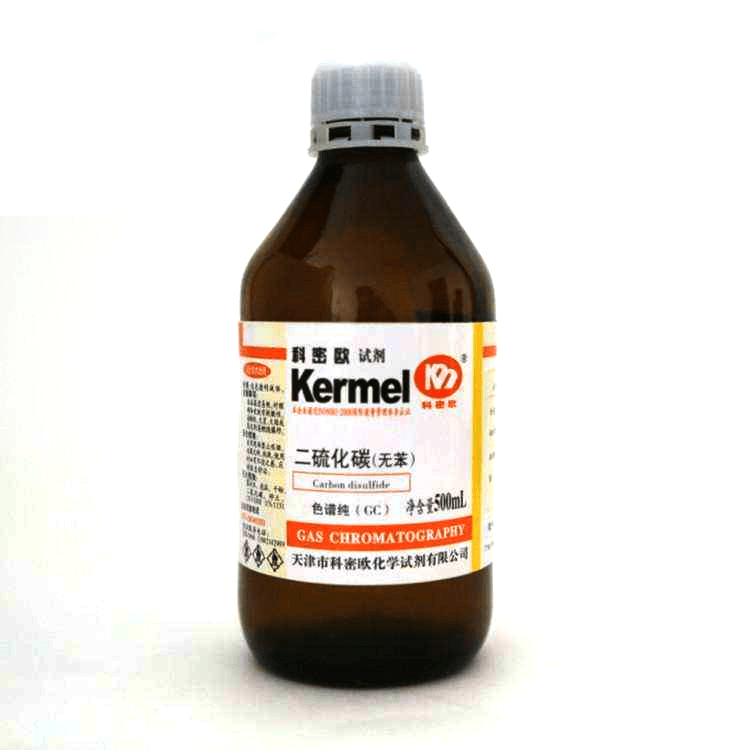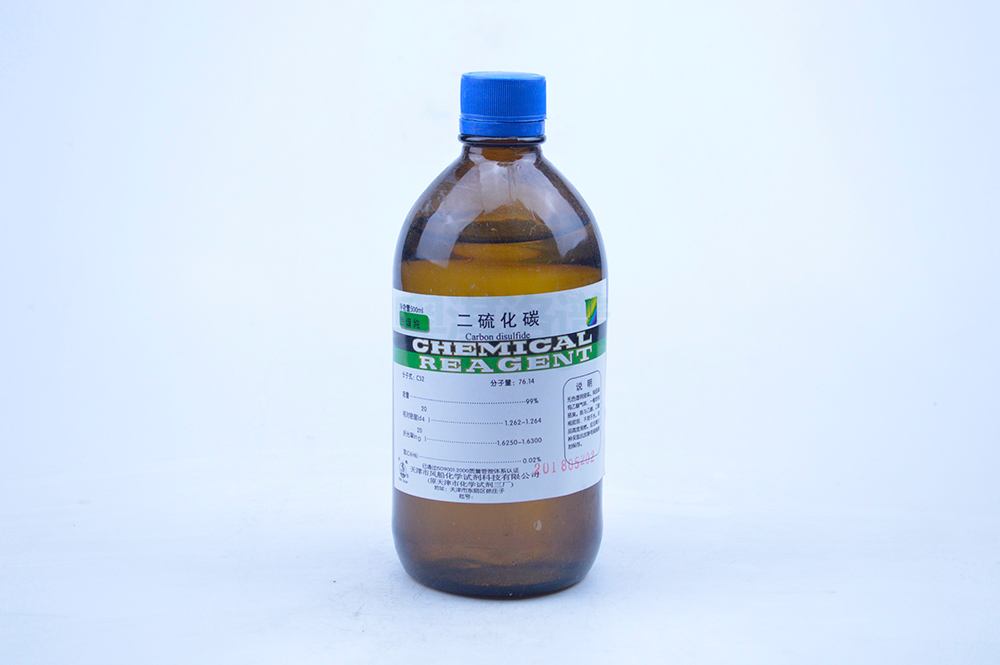Carbon disulfide
Pure distosumanide carbonate used in laboratory has a fragrant sweetness similar to trichlorothalene, but usually unconventional industrial products become slightly yellow because of other sulfide (such as cypeper sulfur, etc.), and there are unpleasant rotten rotten radish. taste.
It is soluble. Carbonized carbonized is used to make artificial silk, pesticides, and promoters, and is also used as solvents.
Carbonide is a wide range of enzyme inhibitors, which has cytotoxic effects, can destroy the normal metabolism of cells, interfere with lipoprotein metabolism, and cause damage to vascular lesions, neuropathy and main body organs.
Under normal temperature and constantly pressing carbonide is a fat -soluble liquid with colorless transparent and slightly aromatic aroma, it is yellow when there is impurities, and a small amount of natural existence in coal tar and crude oil. Smelly egg flavor has strong volatility, flammable and explosiveness.
When burning, it is accompanied by blue flames and oxidized into carbon dioxide and sulfur dioxide. It is mainly used to produce artificial adhesive fiber (artificial cotton, artificial hair) and sticky film. It is also used to make carbon chloride, mirin ammonium ammonium, ammonium ammonium ammonium, oliteate, flotal minerals, solvents and rubber sulfurization Prevention.
Carbonide is also a good solvent for sulfur, phosphorus, selenium, bromine, iodine, camphor, resin, wax, rubber and oil, etc. It is also a solvent for many organic objects for infrared spectrum measurement and hydrogen sub -magnetic resonance spectrum. Most of the intake of the respiratory tract can also be absorbed by the skin. The intake of 1/4 of the breath was discharged, and a small amount was discharged from urine, and the remaining metabolism was transformed.
The metabolites in the urine are sulfate and the existence of positive substances that have a positive reaction to iodine nitrogen -based. The minimum inhalation of people is 4000 ppm (30 minutes). During acute poisoning, excitement, headache, then consciousness, lethargic, and death. When the low concentration is exposed for a long time, there are multiple neuritis in the lower limbs, accompanied by headache, insomnia, decreased sexual desire, and decreased memory.
Long -term exposure (such as 10 years) will occur blood vessel damage characterized by retinal disease and kidney disease. The United States and Japan stipulate that the maximum allowable concentration of atmosphere is 10ppm (30mg/m3).





